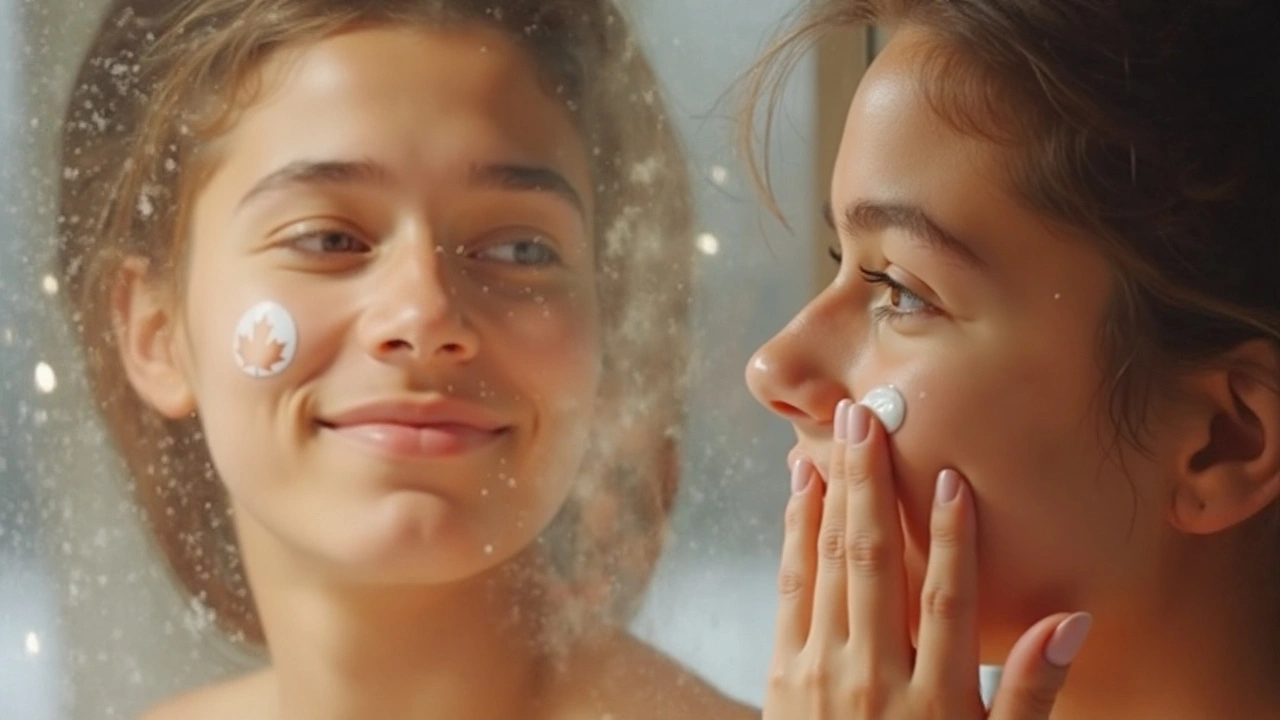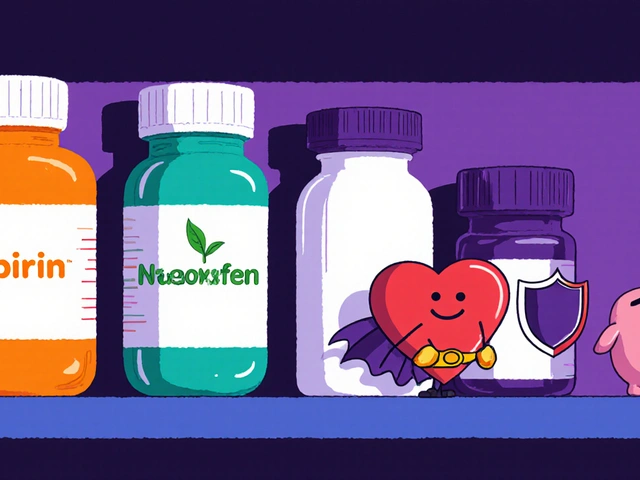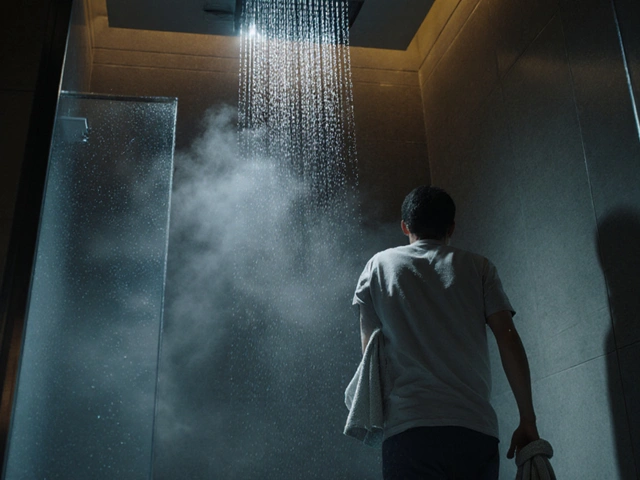People reach for benzoyl peroxide to tackle stubborn breakouts, but many end up confused about strength, frequency, and side‑effects. This article cuts through the noise, showing you exactly how the compound works, how to use it safely, and what mistakes to dodge.
- Understand the chemical action that kills acne‑causing bacteria.
- Pick the right concentration for your skin type.
- Learn a step‑by‑step routine that minimises irritation.
- Spot red‑flag signs that you’re over‑doing it.
- Get quick answers to the most common questions.
How benzoyl peroxide Works on the Skin
Benzoyl peroxide is a double‑acting acne weapon. First, it breaks down into free radicals that oxidise the bacterial cell walls of Cutibacterium acnes (the old name: Propionibacterium acnes). This rapid bacterial kill reduces the amount of inflammatory mediators that cause red, tender pimples.
Second, the compound is mildly keratolytic. It loosens the “glue” that holds dead skin cells together, helping them shed more quickly. When those cells don’t clog the pore, you get fewer comedones (blackheads and whiteheads).
Because it releases oxygen, benzoyl peroxide also creates an environment that is hostile to the anaerobic bacteria that love deep, oily pores. The net effect is a three‑fold attack: bacteria die, excess oil clears, and clogged pores open up.
Research published in the Journal of Dermatological Treatment shows that a 2.5% concentration reduces lesion counts by roughly 50% after eight weeks, while a 5% formula speeds up the drop to about 65% in the same period. The trade‑off is a higher chance of dryness, itching, and mild peeling.

Best Practices for Using Benzoyl Peroxide Safely
Choosing the right strength is the first decision point. For beginners or people with sensitive skin, start at 2.5% or even a 1% “mild” formulation. If your skin tolerates it after two weeks, you can bump up to 5% or 10%-but only if you’re not seeing excessive redness.
Here’s a step‑by‑step routine that balances potency with comfort:
- Cleanse. Use a gentle, sulfate‑free cleanser. Rinse with lukewarm water and pat dry; avoid rubbing.
- Patch test. Apply a pea‑sized amount to a small area (like the jawline) for 24hours. If no burning or rash appears, you’re good to go.
- Apply. Dab a thin layer (no more than a coin‑size amount) on each affected spot. Spread evenly; thicker layers don’t work faster and raise irritation risk.
- Moisturise. Wait 5‑10minutes, then use a non‑comedogenic moisturizer. Look for ingredients like ceramides or hyaluronic acid that restore barrier function.
- Sun protection. Benzoyl peroxide can make skin more photosensitive. A broad‑spectrum SPF30+ sunscreen in the morning is a must.
Frequency matters too. Most dermatologists recommend once‑daily application at night for the first two weeks. If you notice peeling or a burning sensation, cut back to every other night until the skin adapts.
Below is a quick reference table that matches concentration with typical outcomes and potential side‑effects.
| Concentration | Typical Use Case | Expected Reduction in Lesions (8weeks) | Common Side‑effects |
|---|---|---|---|
| 1% | Very sensitive skin, beginners | ≈30% | Minimal dryness, mild tingling |
| 2.5% | Moderate acne, normal to slightly sensitive skin | ≈50% | Dryness, occasional peeling |
| 5% | Persistent inflammatory acne | ≈65% | Noticeable dryness, itching, occasional erythema |
| 10% | Severe, cystic acne (under dermatologist supervision) | ≈70‑80% | Pronounced peeling, burning, possible hypo‑pigmentation |
When you combine benzoyl peroxide with other actives-like retinoids or salicylic acid-pace yourself. Using multiple strong actives on the same night spikes irritation risk dramatically. A practical rule is: **one potent actives per application**. If you need a retinoid, reserve it for the morning (after sunscreen) or alternate nights.
Here are a few pro‑tips that save you from common pitfalls:
- Don’t over‑apply. More product does not equal faster results.
- Store correctly. Keep the tube tightly closed and away from direct sunlight; heat can break down the peroxide.
- Watch clothing. New‑to‑you gels can bleach dark fabrics. Let the product dry fully before dressing.
- Hydrate inside out. Drinking water supports skin barrier repair.

Common Questions and Mistakes to Avoid
Even after you nail the basics, a few lingering doubts usually pop up. Below are the top queries people ask after trying benzoyl peroxide.
- Can I use it on my body? Yes. The same principles apply to chest, back, or shoulders-use a larger, but still thin, layer and moisturise well.
- Will it cause permanent scars? No. Scarring usually stems from untreated inflammatory lesions, not from the peroxide itself. In fact, clearing acne early reduces scar risk.
- Is it safe during pregnancy? Benzoyl peroxide is classified as Pregnancy Category C in many regions, meaning you should consult a healthcare professional before starting.
- Why does it sometimes make my skin look whiter? The bleaching effect is due to peroxide oxidising melanin on the surface. It’s temporary and fades once you stop using the product.
- Can I combine it with a prescription antibiotic? Often dermatologists prescribe a combo of benzoyl peroxide and a topical antibiotic (like clindamycin) to prevent bacterial resistance. Follow your doctor’s guidance.
Typical mistakes that sabotage results:
- Skipping the patch test and jumping straight to daily full‑face applications.
- Using a high concentration from the start, which leads to severe peeling and a high dropout rate.
- Neglecting sunscreen, resulting in post‑inflammatory hyperpigmentation.
- Mixing benzoyl peroxide with oil‑based products; the peroxide breaks down faster, losing effectiveness.
If you catch an error early-like ramping up too fast-trim back to every other night, add a soothing barrier cream (think ceramide‑rich), and resume once redness subsides.
In practice, most users see visible improvement within four weeks and marked clearance by eight to twelve weeks, provided they stick to a gentle routine and adjust strength sensibly.
Got another question? Drop a comment or ask your dermatologist. The key is to treat acne as a marathon, not a sprint, and let benzoyl peroxide do its steady work.




Tim Giles
September 21, 2025 AT 01:10The mechanistic pathway of benzoyl peroxide begins with its decomposition into free radicals upon contact with the epidermal milieu. These reactive oxygen species engage the phospholipid bilayer of Cutibacterium acnes, effectuating oxidative damage to cellular components. Consequently, bacterial viability is compromised, which translates into a measurable decline in inflammatory lesion formation. In parallel, the keratolytic property of the peroxide facilitates desquamation by destabilizing corneocyte cohesion. This accelerated turnover mitigates comedo formation, thereby reducing the propensity for pore occlusion. Empirical data from randomized controlled trials indicate that a 2.5 % concentration yields approximately a fifty‑percent reduction in lesion count over an eight‑week interval. By contrast, a 5 % formulation accelerates the therapeutic gain to roughly sixty‑five percent, albeit with a commensurate elevation in adverse cutaneous events. The principal side‑effects attributable to higher concentrations comprise xerosis, pruritus, and superficial desquamation. Mitigation strategies emphasize the incorporation of barrier‑restoring moisturizers containing ceramides or hyaluronic acid immediately following application. Moreover, judicious scheduling-initiating therapy with alternate‑night dosing and progressing to nightly use contingent upon tolerance-optimizes the risk‑benefit ratio. Photoprotection is indispensable, as peroxide‑induced photosensitivity can potentiate post‑inflammatory hyperpigmentation absent adequate sunscreen use. Patients should also be cognizant of the oxidative bleaching effect on fabric dyes, a consideration often overlooked in clinical counseling. For individuals with concomitant use of other actives, temporal separation or night‑only application of benzoyl peroxide minimizes synergistic irritation. Ultimately, adherence to a structured protocol that balances potency with skin barrier preservation underpins the long‑term success of acne management. It is therefore advisable for clinicians to tailor concentration and regimen to the patient’s dermatologic phenotype and tolerance profile.
Peter Jones
October 5, 2025 AT 10:40Great rundown on the chemistry behind benzoyl peroxide; it really helps demystify why it can be both a hero and a villain for acne sufferers. The step‑by‑step routine you outlined feels practical and not overly intimidating for beginners. I especially appreciate the reminder to start with a patch test and to keep the application thin – over‑application is a common mistake. Balancing it with a good moisturizer and sunscreen makes the regimen sustainable in the long run. Thanks for laying it out in a clear, balanced way.
Gerard Parker
October 19, 2025 AT 20:30Listen, if you’re slapping on 10% without a dermatologist’s oversight you’re courting disaster; the irritation alone can wipe out any gains. The data you cited for 5% is solid, but you gloss over the fact that many users will experience barrier breakdown at that level. My experience as a skin‑care specialist shows that aggressive dosing should be paired with a rigorous barrier‑repair protocol, not just “a moisturizer”. Also, you didn’t mention the importance of pH‑matched cleansers to avoid neutralising the peroxide’s efficacy. Bottom line: respect the strength, respect the skin, or you’ll end up with a worse breakout.
Thomas Burke
November 3, 2025 AT 06:20yeah the keto thing is cool but keep the routine simple
don’t overthink the steps just wash dab and moisturise
stay consistent and you’ll see the glow
remember sunscreen or you’ll get spots later
Debbie Frapp
November 17, 2025 AT 16:10Ooo this is super helpful! I love that you emphasized a gentle start – I once went straight to 5% and my face felt like a desert. The tip about bleaching fabrics is a lifesaver; I’ve ruined a favorite shirt before! Also, the reminder to hydrate from the inside out is something many ignore, but drinking water really does make a difference. Could you maybe share a favorite non‑comedogenic moisturizer that pairs well with peroxide? Thanks for the thorough guide, can’t wait to try it out!
Michelle Abbott
December 2, 2025 AT 01:10Over‑application induces xerotic hyperkeratinization, undermining therapeutic index.